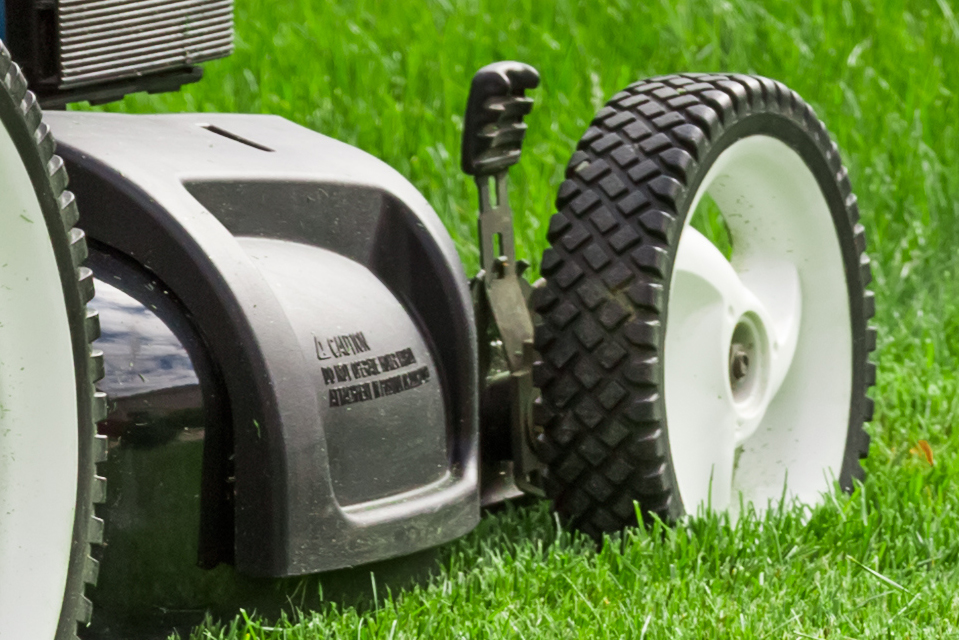How often you mow and how short you go can determine how much water you save — or waste.
With recent rains, summer turf grass (warm season turf grass) is officially growing in south central Texas. If you haven’t started mowing yet, now is a good time check the height of your mower blades.
That’s because unless you’re trying to get rid of the grass, you never want to remove more than one third of a grass blade in a single mowing. Otherwise, you’ll scalp it and leave the lawn with nothing but yellow stalks showing. (Of course, if your goal is to remove grass, scalping it is a fantastic way to start.)
If your grass is still looking healthy after six years of drought, one way to keep it looking that way is to raise the blades and leave them like that throughout summer. Higher grass better retains moisture and nutrients (and helps prevent bald spots and weeds). Adjusting the mowing height helps keep turf dense without having to increase the mowing frequency.
How do you adjust mowing height, you ask? Many mowers have latches at each of the wheels, with notches in ½-inch increments. They may or may not be labeled, but most standard mowers accommodate from 2 inches to 4 inches of mowing height. Start by raising the latches at each wheel to the top and then lower each until they’re all at the same height.

The recommended height varies according to the grass species:
- Bermuda grass: Mow weekly at 2 inches.
- Zoysia: Mow weekly at 2 ½ inches depending on variety.
- Augustine: Mow weekly 3 inches to 3-½ inches; extra height supports its deeper roots.
- Buffalo grass: Mowing (if at all) in summer only, 4 inches or higher.
- Habiturf / thunderturf: Mowing (if at all) in summer only, 4 inches or higher.
- Turf sedge: Mowing not generally recommended.
Again, if you’re not sure — or you have a healthy mix of grasses and mowable groundcovers —err on the side of caution and use a higher height.
Remember, it’s important not to cut off more than 30 percent of the grass length at any one time. If your Bermuda grass has grown to 5 inches and you cut it down to 2 inches, you may end up with yellow bases and weeds spreading in the newly exposed areas.
Should rainy weather continue to occur in summer, experts advise mowing warm season grasses more frequently. That can mean once a week or more; however, the ease of applying this recommendation depends on the size of the grass area. As always, there’s a decision to be made about how much lawn you really need and how much can be easily maintained.
If you need other options, SAWS WaterSaver Landscape Coupons can help you convert unnecessary grass areas to hardy landscaping or outdoor living spaces.


